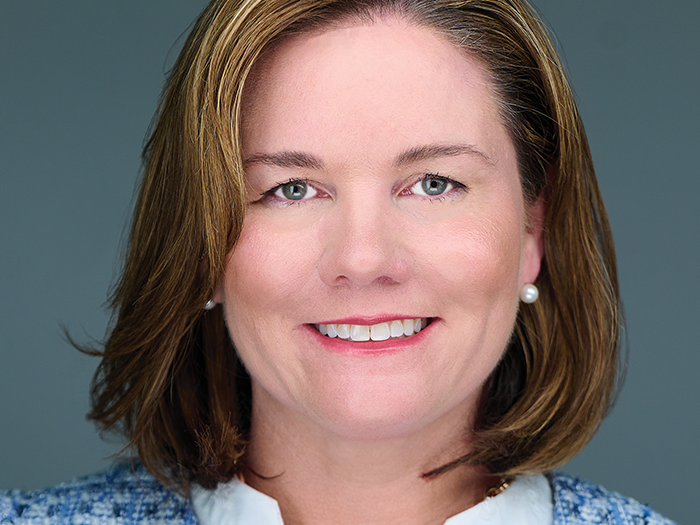Sponsored: State of Vermont
Why Captive Domicile Examinations Matter

There are a host of different factors that captive insurance companies need to take into account when deciding on where to be domiciled.
They need to look at the regulatory environment; capitalization, taxation and fees; the local captive community; and the implications of being onshore or offshore.
But what is often most overlooked is the importance of the use and quality of regulatory examinations.
Rather than relying on meeting solvency, liquidity and profitability ratios or captive managers to keep regulators informed of any potential regulatory issues, some domiciles like Vermont carry out periodic examinations to ensure compliance with their laws. Prospective captive companies might not realize that examinations can be very beneficial to them in the long run.
Thoughtful and well executed regulation is essential in establishing the credibility of a captive domicile. With over 40 years of experience and over 1250 licensed captives, Vermont has established a very robust regulatory framework for captives. This framework includes firm and fair laws, a careful and considerate licensing function, and ongoing monitoring, a vital part of which includes routine examinations. Exams (and analysis) are tools that the regulator has available to ensure the financial health and wellbeing of their regulated entities as well as the industry overall.
Dan Petterson, Vermont’s Director of Captive Examinations said, “Exams provide an opportunity to get to know our companies better, understand their challenges and successes, and learn what is driving their decision making.”
Petterson started with the Captive Division in 2010 and has seen over 1200 examinations finalized since that time. “We evolve and our captives are constantly evolving. Exams allow us to see where a company has been, but also can provide comfort that a company knows where it is going and has the resources to get there.”
So what makes examinations beneficial? One important aspect is when a domicile has properly qualified and trained staff to examine the sophisticated operations of that captive.
The examiners effectively act as a backstop to ensure that the credentials and financial information a captive management team presents when seeking licensing are sound and valid. They look at three key areas when determining how well the company is run: financial reporting; overall governance and general compliance with that State’s laws and regulations.
As a gold standard domicile, Vermont has been at the forefront of captive examinations for the past 40 years with its hands-on approach to regulation, being statutorily authorized and required to perform exams on its captives. During that time, it has built a 23-strong team of expert examiners who regularly and thoroughly examine the domicile’s 600 active licensed captives, conducting more than 100 exams a year. There is a very low turnover rate in the department and many of Vermont’s captive examiners not only have the necessary education and certifications to do their job well, but many came from the private sector in the captive industry and are using their skills in their regulatory role.
Petterson also indicated that his team spends a great deal of time refining their programs with a goal of providing an efficient and effective process tailored for each of the captives being examined.
The exam process, which is repeated every three to five years, results in the issuance of an examination report. “Exams further provide confirmation that a company is doing well via the exam report, and companies do like to report that they are doing well”, said Petterson. “Companies that choose to place their captive in a well-regulated domicile not only appreciate that level of regulation, but they expect it.”
Main Factors to Consider

Dan Petterson, Director of Captive Examinations, State of Vermont
“There are several factors that captive owners and managers need to take into account when looking at examinations,” said Petterson.
“They need to know whether the examinations team is experienced; how often they carry out exams; how much each one costs; how long they take; and what value they can add to the company.”
Captive regulation varies by state with some domiciles choosing to complete exams and others not. There are also some domiciles that have in-house exam staff and others that use contractors and traditional captive insurance departments may be separate or there may be little separation. These are all factors that could impact examinations and should be understood prior to domicile selection.
Exams matter in many ways, but they do come at a cost. Average exam fees for pure captives in Vermont are in the $10k range and average exam fees for RRGs in Vermont are in the $35k range. They can also be time consuming depending on the sophistication of the company under exam. These are a couple of factors that may matter when choosing a captive domicile.
Before choosing a domicile, captive managers can contact the regulator equipped with a set of key questions to ask them about the examination process. Once they get the answers they need, they’re in a better position to make an informed choice about whether that’s the domicile for them.
The Examination Process
Rather than relying solely on audits, ratios, or captive managers to keep regulators informed of any potential regulatory issues, some domiciles carry out periodic examinations to ensure compliance with their laws. This method also provides a greater degree of regulatory flexibility, but its quality is only ensured if that domicile’s supervisory staff are properly qualified and trained to examine the sophisticated operations of that captive.
As the gold standard domicile, Vermont has been at the forefront of captive examinations for the past 40 years with its hands-on approach to regulation, being statutorily authorized and required to perform exams on all of its captives. During that time, it has built a 23-strong team of expert examiners who regularly and thoroughly scrutinize the domicile’s 600 active licensed captives, conducting more than 100 exams a year.
To ensure the financial health and wellbeing of the captives it regulates, Vermont has a range of tools it uses to actively monitor and regulate them, ensuring the process is as smooth, efficient, and painless as possible for both the company and regulator, while adding value at both ends. These measures include laws, regulations, orders, target reviews, supervision, liquidations, and analyses. Essentially, it’s another set of trained eyes on the captive. Identifying issues in the examination process can help prevent future insolvency.
Captive exams are carried out by appropriately staffed teams and are scheduled based on year, complexity, and degree of coordination with other states (if appropriate). A large percentage of the time is spent planning and understanding the ins and outs of the company being examined, based on interviews with its executives, board members, managers, and other service providers.
The examiners gain a greater understanding of the captive by also closely evaluating its structure, strategy, governance, information systems, controls, policies, procedures, and agreements. The degree of testing depends on how robust their internal controls are, with more work being required on smaller and more sophisticated companies. Multi-state captives also undergo exams that follow full National Association of Insurance Commissioners accreditation guidelines.
Exams in Vermont are completed on average in about 150 days with a goal of no more than 180 days from the start of the exam to the issuance of a final report. While the majority of captives are well-run, there are some key red flags that examiners are trained to look for: adverse loss development and poor oversight being two of them.
“Our exams are all risk-focused, and that means we concentrate our time, effort and resources on the parts of the company that pose the greatest risks to their solvency and likelihood to be able to continue to operate,” said Petterson, “they look a little like an independent audit, but are less frequent and have a greater emphasis on governance and compliance, as well as prospective risks.”
The end goal is to ensure all captives that are examined remain solvent. It’s also to make sure that all the stakeholders involved are protected too. For their part, companies need to be open and respond promptly to help with the process and ensure everything is kept within timeframe and budget. By communicating problems at an early stage, they can be resolved quicker too.
“Our hope is that we provide some value to our regulated entities during examinations, whether it be through discussion of findings, recommendation of best practices, or just relationship building,” said Petterson. “We want our companies to be successful!”
Key Benefits
The benefits of Vermont’s examination process are clear to see, according to some of Vermont’s captive owners. Captive owners said that its partnership ethos is key.
One of the biggest misconceptions about captive exams is that they are simply focused on passing or failing a company. In reality, they can be very helpful and supportive and are meant to ensure a captive’s solvency and give companies a report that says they comply with the regulations and are in good shape, to show their board, affiliates or business partners. This can be beneficial when the company needs to show their board, financial institutions, affiliates or business partners they are in good standing. When issues do arise, though, they are identified with a collaborative approach.
“Vermont takes a collaborative approach on their regulatory audits, which in our experience provides a productive, more detailed and thorough result,” said Steve Wilder, Vice President, Risk Management at Disney. “Through this co-operative process, a true partnership is created that gives me comfort in knowing my teams and service providers are operating well together and in compliance.”
Vermont’s experience is another big plus point. As is its proactive, risk and solution-based approach to weeding out and correcting any issues.
“It is reassuring to collaborate with professionals who have the depth of experience of our Vermont regulatory team,” said Julie Bordo, captive owner of PCH Mutual Insurance Company, Inc.
“We can rely on our regulators to flag issues or identify trends and take the time to meet with us to exchange thoughts and ideas leading us to solutions.”
Another key advantage is that because Vermont’s examiners are in-house, they can take the knowledge and experience they have acquired over forty years and continue to apply that to future exams, as well as developing a much deeper relationship with the captive. Because of this experience carrying out both examinations and surveillance, they have a more well-rounded set of tools to evaluate a company with as well.
Thanks to technology and already working remotely, Vermont’s examinations team was able to overcome the challenges of the COVID-19 pandemic. The efficiency of being able to talk with captive managers and owners online has also helped to speed up the examination process.
Proactive Approach to Improving the Process
The process is continually evolving, and Vermont is constantly looking for ways to refine and make the process more efficient. It is important for captives to see that a domicile is seeking feedback and improvement in their regulatory processes.
Success breeds success, and the better thought through and executed it is, the more it adds to Vermont’s credibility as a leading domicile. That, in turn, also protects the reputation of the companies.
“Our model was designed to provide the regulatory oversight needed to regulate insurance companies, but it was also built with the ability to scale it for entities that we regulate,” said Petterson. “In that vein, we want everyone to recognize that we not only have the tools to do the work the right way, but also to do it well, and exams are just one of those tools.”
“At the end of the day, most companies want oversight of their insurance program as it legitimizes it and provides them with comfort. They want to know that everything is being done correctly and that they are well-regulated.”
For more information about Vermont Captive, visit www.vermontcaptive.com.
This article was produced by the R&I Brand Studio, a unit of the advertising department of Risk & Insurance, in collaboration with State of Vermont. The editorial staff of Risk & Insurance had no role in its preparation.










